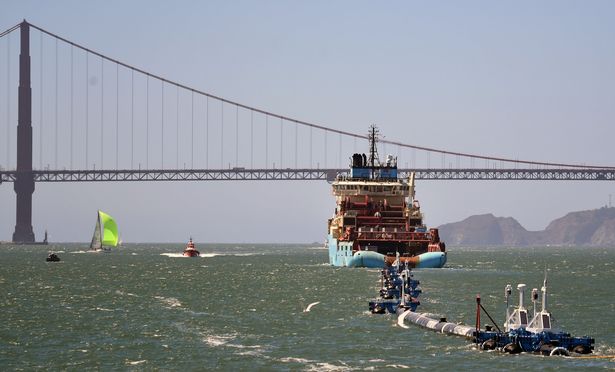A giant 610-meter long contraption to clean up plastic from the Pacific Ocean was launched off the coast of San Francisco on Sunday.
Dubbed System 001, this giant sea sieve is the brainchild of a Dutch college drop-out who began working on his invention aged 18, five years ago.
Boyan Slat has been obsessed with clearing plastic from the sea since a childhood holiday in Greece where he was disgusted with plastic waste in the water and vowed to devote his life to clearing it up, the Mirror reported.
Back home in the Netherlands, he quit his aerospace engineering studies at the Delft University of Technology and founded the nonprofit Ocean Cleanup, where he is now CEO with a staff of 65 engineers and scientists.
His ungainly device sailed under the Golden Gate Bridge Sunday in the hope it will help collect rubbish from the Great Pacific Garbage Patch which is thought to be the size of Texas.
Slat's Dutch non-profit organization has gathered support from several foundations and philanthropists.
In 2017, the Ocean Cleanup Project received £4.5 million in donations and reported reserves from donations in previous years of £13 million.
The Ocean Cleanup Project's system is made up of a series of connected pipes the length of five football fields that float at the surface of the ocean.
Each closed pipe is 1.2 meters in diameter and below these hang a 2.7-meter net skirt.
The system moves more slowly than the water, allowing the currents and waves to push trash into its center to collect it.
Floating particles are captured by the net while the push of water against the net propels fish and other marine life under and beyond.
The system is fitted with solar-powered lights and anti-collision systems to keep any stray ships from running into it, along with cameras, sensors and satellites that allow it to communicate with its creators.
For the most part the system will operate on its own, though a few engineers will remain on a nearby ship to observe.
Periodically a garbage ship will be sent out to scoop up the collected trash and transport it to shore, where it will be recycled.


